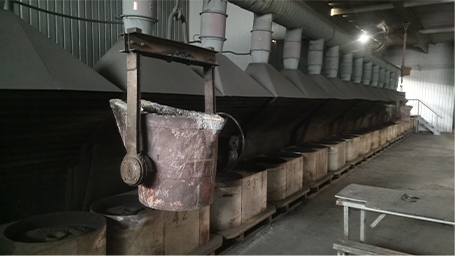Novemba . 17, 2024 15:06 Back to list
do new brake drums need to be turned
Do New Brake Drums Need to Be Turned?
When it comes to vehicle maintenance, particularly within the brake system, there are many misconceptions and best practices that often lead to confusion. A common question that arises among car owners is whether new brake drums need to be turned before installation. This article will clarify this topic, providing insights into the reasons behind brake drum maintenance, and the implications of turning new brake drums.
Understanding Brake Drums
Brake drums are a crucial component in the drum brake system, commonly found in older vehicles and certain models of trucks. They work in conjunction with brake shoes to slow down or stop the vehicle when the brakes are applied. The friction created between the brake shoes and the inside of the drum is what brings the vehicle to a halt. Over time, these drums can become warped, worn, or damaged, leading to uneven braking and decreased performance.
What Does Turning a Brake Drum Mean?
Turning a brake drum involves machining the drum's surface to create a smooth, even finish. This process removes any imperfections, such as grooves, scoring, or warping, that may have developed over time. Turning is typically performed on used drums to restore their functionality. However, when it comes to new brake drums, the necessity of this process can be debated.
Do New Brake Drums Need to Be Turned?
do new brake drums need to be turned

The short answer to whether new brake drums need to be turned is generally no. New brake drums are manufactured to high precision standards. They are designed to have a smooth surface right out of the box, reducing the likelihood of any need for further machining. However, there are some considerations for specific cases
1. Quality Control Issues While rare, there could be instances where a new drum may have manufacturing defects or imperfections. If a brake drum is visibly damaged, warped, or rough, it may benefit from being turned before installation. Always inspect new parts thoroughly before installation.
2. Improving Performance While not required, some technicians choose to turn new drums as a precautionary measure to ensure they have the absolute best surface for friction. This practice—though debated—can theoretically optimize brake performance by ensuring perfect contact with the brake shoes.
3. Matching Brake Shoes Another reason for turning new drums is to ensure they match existing brake shoes precisely. If the shoes are old and have been worn unevenly, turning the drums can ensure that they wear in together properly during initial use.
Conclusion
In most cases, new brake drums do not need to be turned. They are manufactured to provide optimal performance without additional machining. However, it is critical to examine each drum for any potential flaws before installation. If any defects are found, turning may be necessary for safe and efficient braking.
In summary, the practice of turning new brake drums is generally unnecessary and may be more of a personal preference among mechanics rather than a standard requirement. Always consult with a professional mechanic if there are any doubts about the condition of your brake components. Remember, the ultimate goal is to ensure safe and reliable vehicle operation, and properly maintained brakes are a significant part of that equation.
-
Genuine Nissan Brake Drums | OEM Fit & Performance
NewsAug.09,2025
-
Seamless International Solutions for Global Business & Travel
NewsAug.08,2025
-
Premium Volvo Brake Drums: Truck, Semi & VNL Performance Parts
NewsAug.07,2025
-
BPW Axles & Suspensions | Quality Running Gear for Trailers
NewsAug.06,2025
-
Premium Iveco Brake Drum - Durable & Reliable Performance
NewsAug.05,2025
-
High-Performance Nissan Brake Drum | Durable Braking
NewsAug.03,2025
